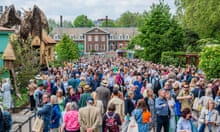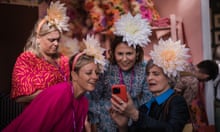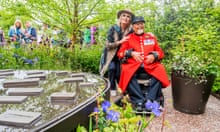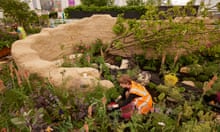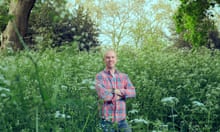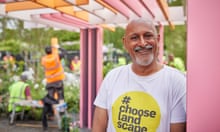Designers often travel abroad to seek inspiration for their Chelsea show gardens, but their trips don’t usually entail an arduous journey by road, passing armed border guards because the nearest airport is closed.
The Guardian’s product and service reviews are independent and are in no way influenced by any advertiser or commercial initiative. We will earn a commission from the retailer if you buy something through an affiliate link. Learn more.
Tom Massey visited Domiz camp in northern Iraq earlier this year to find out how refugees are carving out makeshift gardens, in the hope of bringing some of that spirit of inventiveness to a Main Avenue Chelsea plot. It was an eye-opener for him, showing how people who arrived with nothing have recreated a tiny slice of their lives back home, mostly in Syria. “They are thrown together, given a basic shelter. It was humbling to see how important gardening and growing is to them and how much benefit green space gives,” he says.

When the Lemon Tree Trust, which is sponsoring the garden, asked refugees what they missed most about home, they talked about the sounds of nature, their gardens, and trees. Many of them asked for seeds. They had begun raising songbirds and pigeons, crafting elaborate fountains from concrete, and carving productive beds from the dusty soil.
And while Chelsea may be a world away from the fragile, harsh existence of a Domiz plot, the trust’s CEO, Stephanie Hunt, hopes visitors will be able to relate “gardener to gardener” to the story the garden will tell. “We wanted to elevate the discussion around refugees, and show they are more than the pain and hardship that they have seen – they want to move on, and their gardens bring them joy.”

Massey’s show garden uses the same limited set of raw materials that the 26,000 refugees at Domiz have access to – concrete and steel – plus ordinary objects they repurpose, from tin drums to plastic bottles. At the centre is an Islamic-inspired fountain fed by rills of water that radiate from it; one of the boundary walls is covered with gutter pipes and cans filled with plants; and fig, pomegranate and lemon trees offer shade, scent and food. “Lots of people I met said their gardens are places for escape, so I wanted to create areas where people could sit and listen to running water,” Massey says. “The plants have a strong sensory nature to transport them to other places.”
The show garden won’t be a carbon copy of the refugees’ plots. “It has to have a certain Chelsea polish, or it won’t work.” That gloss comes in the form of polished rather than poured concrete, steel cut by laser rather than basic tools, and a palette of plants specially grown by the nursery Hortus Loci.
Will the average Chelsea visitor engage with this garden’s message? Massey thinks so, but then, he’s already tested the water: one of the two show gardens he designed at the RHS Hampton Court show in 2016 was sponsored by the UN Refugee Agency. This conceptual garden, called Border Control, highlighted the dangerous journeys refugees make. “It’s nice to see gardens like this at big shows – that it’s not just high-end gardens without much message behind them,” he says.

For Massey, it’s been a steep learning curve: he is making his Chelsea debut less than three years after he started practising. He studied animation then went into advertising, but found there was “too much sitting in a dark room”, so retrained as a garden designer. “I have always had a deep connection to the landscape. I grew up in Richmond with the park on my doorstep and spent long summers in Cornwall going a bit feral,” he says.
While at Domiz, Massey explored the Mesopotamian plain that surrounds the camp, a biodiversity hotspot packed with unfamiliar species. He was accompanied by Dr Sami Youssef, a biodiversity expert who had been a refugee in the camp and was instrumental in starting the trust’s growing garden there; Youssef had found several previously unrecorded plant species growing nearby. Massey has drawn on Youssef’s knowledge to ensure his own garden uses the right species.
“Meeting Sami really underlined that a refugee camp is filled with ordinary people,” Massey says. “Journalists, designers, architects, botanists, farmers, teachers, decorators – all just doing their best to survive.”

Other Chelsea highlights
The Pearlfisher garden, by John Warland, will bring the beauty and fragility of marine life to west London, highlighting the urgent issue of plastic waste in the seas. Cacti and succulents will mimic coral, and air plants become floating algae.
The Cherub HIV garden, by Naomi Ferrett-Cohen, focuses on the story of a young person living with HIV, with white pods representing clinics.
The Embroidered Minds Epilepsy garden designed by Kati Crome explores the effects epilepsy had on the designer William Morris’s family.

